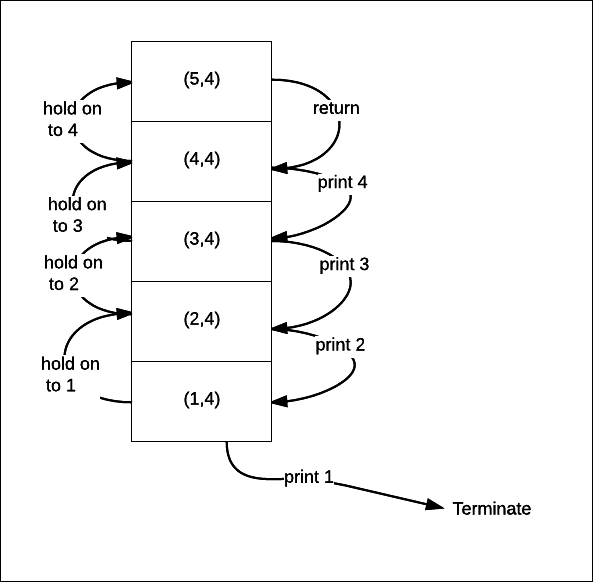Tail call optimization
We are using recursion to express looping. However, recursive code could result in a stack overflow. We need to understand an important optimization technique called tail call optimization (TCO). When TCO is applied, behind the scenes, recursion is expressed as a loop. This avoids stack frames, and subsequently, stack overflow.
For example, here is the preceding print method modified to print the range in reverse:
scala> def revprint(low: Int, high: Int): Unit = {
| if (low <= high) {
| revprint(low+1, high)
| println(low)
| }
| }
scala> revprint(1,4)
4
3
2
1
The following diagram shows the stack frames used:

We need the stack ...
Get Learning Functional Data Structures and Algorithms now with the O’Reilly learning platform.
O’Reilly members experience books, live events, courses curated by job role, and more from O’Reilly and nearly 200 top publishers.

